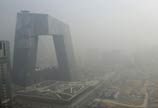TIANJIN - Beijing's neighbor Tianjin released its air pollutant analysis at the weekend, in which dust pollution was blamed as main cause of smog.
About 100 kilometers away from China's capital, Tianjin is the second city to release the analysis of its fine particular matter, or PM 2.5. These airborne particles smaller than 2.5 microns in diameter cause smog.
|
 |
| Special: Fight air pollution |
"By analyzing the pollutants, we can take different measures specifically in different areas to curb smog," said Feng Yinchang, a professor with the College of Environmental Science and Engineering who oversees the research.
According to the analysis, about 30 percent of the air pollutants was dust. Coal burning, motor vehicle exhausts and industrial production accounted for 27 percent, 20 percent and 17 percent respectively.
This is quite different from the result in Beijing, where the PM 2.5 was caused mainly by motor vehicle exhausts, followed by coal burning, industrial production and dust, with the percentages of 31.1, 22.4, 18.1 and 14.3 respectively.
Shijiazhuang, capital city of the adjacent Hebei Province, hasn't released the analysis yet, but Feng believed the main pollutant was from industrial production.
Calling for cross-regional cooperation, Feng noted that air pollution in one area often affects another. "About 28 to 36 percent of the PM 2.5 in Beijing is the result of migrating pollutants," he said. "In Tianjin, the percent is between 22 to 34."
Smog has affected large parts of China since 2013, threatening people's health. Situation in north China is especially serious.
Average density of fine particular matter, or PM 2.5, in Beijing last year was 89.5 micrograms per cubic meter, far beyond the pollution control cap target of 60.
Beijing has reduced traffic, phased out old motor vehicles and banned coal use to improve air quality.
